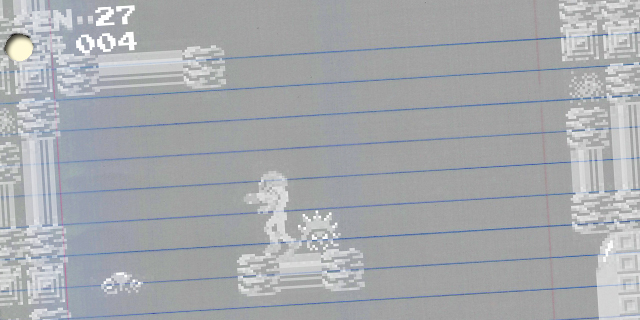
Genre 101 is a series that looks at the past and present of a game genre to find lessons about what defines it. This time, we get a better sense of the recursive exploration action-platformer from “guest lecturer” Chris Dominowski.
A world, more open
 Chris Dominowski: Before the Famicom, anything more single-screen arcade games was simply too taxing for a home console. Given both technical limitations and an arcade-focused development mentality, the concept of a large, open-world adventure was practically inconceivable to most. On Nintendo’s new platform, a game could combine the platforming skill-based gameplay of Mario and the free-roaming adventure gameplay of Zelda into something entirely new.
Chris Dominowski: Before the Famicom, anything more single-screen arcade games was simply too taxing for a home console. Given both technical limitations and an arcade-focused development mentality, the concept of a large, open-world adventure was practically inconceivable to most. On Nintendo’s new platform, a game could combine the platforming skill-based gameplay of Mario and the free-roaming adventure gameplay of Zelda into something entirely new.
While the Metroid games would not become the definitive pillar of the genre as we know it today until Super Metroid, the original title laid a basic framework for it. All of the core elements are there: an open, side-scrolling world, blocked-off areas to become accessible through later abilities and the necessity of exploration.
 Graham Russell: It’s interesting that this subgenre was born both from technical advancements and technical limitations. It was the better tech that allowed for open roaming and collectible abilities, but you wouldn’t have seen this recursive exploration without a need to re-use areas and recycle work and cartridge space but manage more gameplay at the same time. Would we have seen these games develop without those time and space restrictions?
Graham Russell: It’s interesting that this subgenre was born both from technical advancements and technical limitations. It was the better tech that allowed for open roaming and collectible abilities, but you wouldn’t have seen this recursive exploration without a need to re-use areas and recycle work and cartridge space but manage more gameplay at the same time. Would we have seen these games develop without those time and space restrictions?
 Absolutely we would. The push for larger, more engaging worlds is a natural progression, and we would have seen the subgenre come into its own regardless of technical limitations. Plus, reusing assets is just efficient design; it happens even with the most detailed games. I know that the appeal of Metroidvanias is intrinsic to its gameplay and that such limitations may have affected the history of the subgenre, but its core components are wholly organic.
Absolutely we would. The push for larger, more engaging worlds is a natural progression, and we would have seen the subgenre come into its own regardless of technical limitations. Plus, reusing assets is just efficient design; it happens even with the most detailed games. I know that the appeal of Metroidvanias is intrinsic to its gameplay and that such limitations may have affected the history of the subgenre, but its core components are wholly organic.
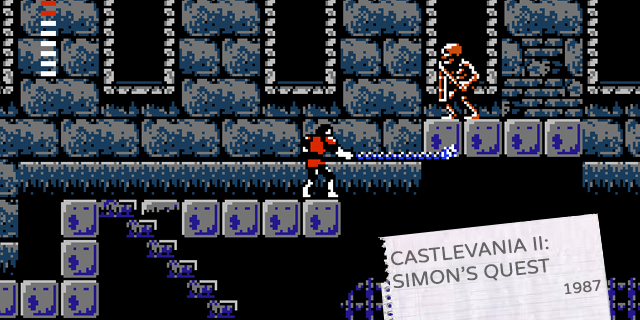
A heroic bloodline
 Simon Belmont’s second outing was a drastic departure from his first. Abandoning the strictly linear confines of the original, the game opted for a much more free-roaming world that gave the player far more options for progression. Simon’s Quest holds the distinction of being the title that introduced light RPG elements as a genre staple. Simon could buy items, upgrade weapons and extend his health. These elements were all important to establishing a notion of progress that is endemic to the subgenre.
Simon Belmont’s second outing was a drastic departure from his first. Abandoning the strictly linear confines of the original, the game opted for a much more free-roaming world that gave the player far more options for progression. Simon’s Quest holds the distinction of being the title that introduced light RPG elements as a genre staple. Simon could buy items, upgrade weapons and extend his health. These elements were all important to establishing a notion of progress that is endemic to the subgenre.
 Simon’s Quest marks the second game that, at least originally, was developed for the Famicom Disk System, and I think that’s no accident. The peripheral was largely a cost-cutting measure, but the main advantage it had was a save system. In many ways, aren’t the innovations of the Metroidvania built around showing off this persistence over multiple playthroughs?
Simon’s Quest marks the second game that, at least originally, was developed for the Famicom Disk System, and I think that’s no accident. The peripheral was largely a cost-cutting measure, but the main advantage it had was a save system. In many ways, aren’t the innovations of the Metroidvania built around showing off this persistence over multiple playthroughs?
 Well said. The Famicom itself represented a radically-new refocusing of how console game development was viewed, featuring experiences that could not be done in arcades. Later, the larger save files allowed by the PlayStation’s memory card and Saturn’s internal RAM meant that the massive Symphony of the Night could add even greater nuance to the game than ever before.
Well said. The Famicom itself represented a radically-new refocusing of how console game development was viewed, featuring experiences that could not be done in arcades. Later, the larger save files allowed by the PlayStation’s memory card and Saturn’s internal RAM meant that the massive Symphony of the Night could add even greater nuance to the game than ever before.
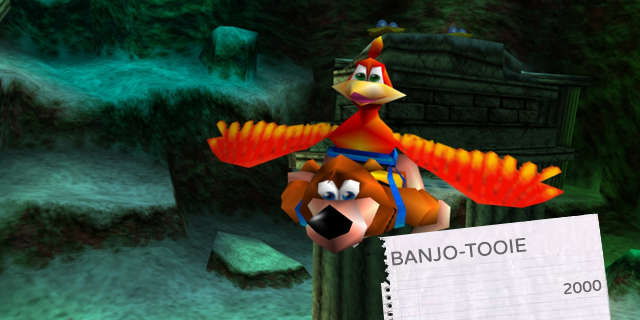
Wider applications
 As opposed to its predecessor, in Banjo-Tooie, you unlock abilities and are frequently forced to backtrack to other worlds in order to achieve certain goals; the player could usually complete a world in a single go in the original game. You are able to upgrade your health and ammunition supplies throughout the game, so statistical upgrades are present in some form. Most importantly, exploration and discovery are encouraged first and foremost. Banjo-Tooie ostensibly contains all the hallmarks of a Metroidvania game, but in 3D, making it one of the first to make that transition.
As opposed to its predecessor, in Banjo-Tooie, you unlock abilities and are frequently forced to backtrack to other worlds in order to achieve certain goals; the player could usually complete a world in a single go in the original game. You are able to upgrade your health and ammunition supplies throughout the game, so statistical upgrades are present in some form. Most importantly, exploration and discovery are encouraged first and foremost. Banjo-Tooie ostensibly contains all the hallmarks of a Metroidvania game, but in 3D, making it one of the first to make that transition.
 As we’re learning through this series, genres are often very flexible and can be applied to other existing forms. Tooie is an example of the formula applied to a “collect-a-thon era” title, and it does it without overwriting the original’s ideas. Are there existing game types that you think simply wouldn’t work together well with Metroidvania concepts? (And have any of these bad combos actually been made?)
As we’re learning through this series, genres are often very flexible and can be applied to other existing forms. Tooie is an example of the formula applied to a “collect-a-thon era” title, and it does it without overwriting the original’s ideas. Are there existing game types that you think simply wouldn’t work together well with Metroidvania concepts? (And have any of these bad combos actually been made?)
 Forecasting the impossible is always a risky proposition. There have been some very bizarre combinations for the subgenre, such as party games (Castlevania: Harmony of Despair) and even dating sims (Ore ga Omae o Mamoru). That said, I think that certain esoteric combinations with, say, simulation or real-time strategy games, won’t work due to the drastic contrast in pacing and engagement factors.
Forecasting the impossible is always a risky proposition. There have been some very bizarre combinations for the subgenre, such as party games (Castlevania: Harmony of Despair) and even dating sims (Ore ga Omae o Mamoru). That said, I think that certain esoteric combinations with, say, simulation or real-time strategy games, won’t work due to the drastic contrast in pacing and engagement factors.
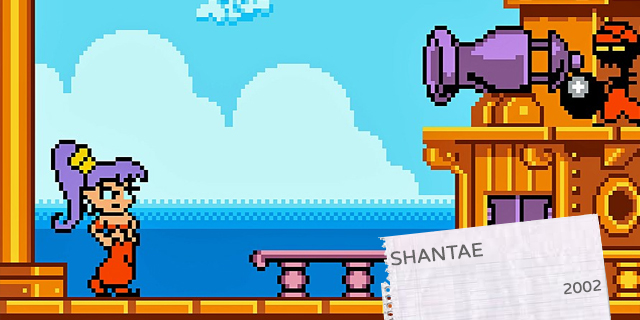
Distilled adventure
 Shantae bears the distinction of being one of the first notable portable Metroidvania games. The brainchild of WayForward game designer Matt Bozon, Shantae gave players one of the most beautifully-realized and rendered worlds on the humble (and aging) Game Boy Color. The game made its open world bite-sized and appealing to gamers who prefer short play sessions, thanks to its greater focus on tangible progression letting even a lunch break play feel rewarding. Shantae proved that the labyrinthine and challenging nature of Metroidvanias didn’t have to be restricted to consoles and computers alone.
Shantae bears the distinction of being one of the first notable portable Metroidvania games. The brainchild of WayForward game designer Matt Bozon, Shantae gave players one of the most beautifully-realized and rendered worlds on the humble (and aging) Game Boy Color. The game made its open world bite-sized and appealing to gamers who prefer short play sessions, thanks to its greater focus on tangible progression letting even a lunch break play feel rewarding. Shantae proved that the labyrinthine and challenging nature of Metroidvanias didn’t have to be restricted to consoles and computers alone.
 It also managed to do it in one of the smallest fields of view games can muster. It wasn’t the first, as you could probably give that title to Metroid II: Return of Samus, but it really did use some innovative tricks to give the world both depth and personality that we’d see emulated in other titles.
It also managed to do it in one of the smallest fields of view games can muster. It wasn’t the first, as you could probably give that title to Metroid II: Return of Samus, but it really did use some innovative tricks to give the world both depth and personality that we’d see emulated in other titles.
 Perspective is important in Metroidvanias, particularly portable entries. Games in the subgenre often rely on making a player feel as though the world is against them (and quite capable of causing them harm), so making the player sprite smaller compared to the world is one good way of invoking this emotion. However, this doesn’t work quite as well on low-resolution portables, as learned in Castlevania: Circle of the Moon. Finding a good balance between the two is necessary on systems with that kind of limitation.
Perspective is important in Metroidvanias, particularly portable entries. Games in the subgenre often rely on making a player feel as though the world is against them (and quite capable of causing them harm), so making the player sprite smaller compared to the world is one good way of invoking this emotion. However, this doesn’t work quite as well on low-resolution portables, as learned in Castlevania: Circle of the Moon. Finding a good balance between the two is necessary on systems with that kind of limitation.
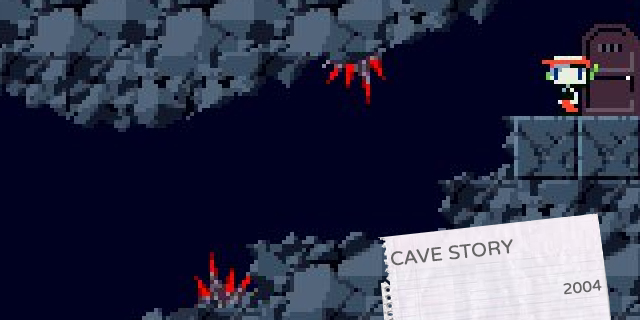
A singular experience
 Cave Story sparked a trend in gaming that has become a major force in gaming today: the indie auteur. The game was made by one man, Daisuke Amaya (“Pixel”), and is one of the most revered independent games of all time thanks to its tight design, minimalist aesthetic and nonexistent price tag. The revival of Metroidvania games by indie devs can be attributed a great deal to Pixel’s creation. The format of the subgenre supports reconciling more simplistic and manageable 2D graphics (often adopting a similar retro audiovisual aesthetic) with modern game design sensibilities to allow for an experience that smaller development teams or individuals can realistically deliver.
Cave Story sparked a trend in gaming that has become a major force in gaming today: the indie auteur. The game was made by one man, Daisuke Amaya (“Pixel”), and is one of the most revered independent games of all time thanks to its tight design, minimalist aesthetic and nonexistent price tag. The revival of Metroidvania games by indie devs can be attributed a great deal to Pixel’s creation. The format of the subgenre supports reconciling more simplistic and manageable 2D graphics (often adopting a similar retro audiovisual aesthetic) with modern game design sensibilities to allow for an experience that smaller development teams or individuals can realistically deliver.
 The same reasons that the genre worked well in an age of limited cartridge space make it an ideal venue for budget-limited indies. Revisiting areas with new abilities allows for depth without needing to generate as many assets.
The same reasons that the genre worked well in an age of limited cartridge space make it an ideal venue for budget-limited indies. Revisiting areas with new abilities allows for depth without needing to generate as many assets.
 You’ve hit the nail on the head. There’s also the sentiment that Metroidvanias are one of the subgenres from the 8-bit era that hold up the best from a mechanics perspective, as well. Establishing flow between areas as opposed to making specific levels is a good way for budding indie developers to learn a great deal about level design, since it is important to make the world cohesive and adherent to the game’s logic.
You’ve hit the nail on the head. There’s also the sentiment that Metroidvanias are one of the subgenres from the 8-bit era that hold up the best from a mechanics perspective, as well. Establishing flow between areas as opposed to making specific levels is a good way for budding indie developers to learn a great deal about level design, since it is important to make the world cohesive and adherent to the game’s logic.
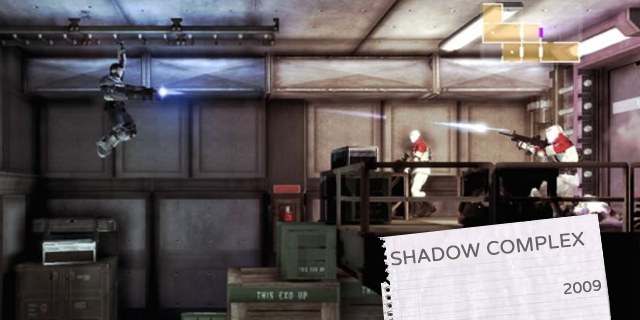
Increasing complexity
 For all the innovation Metroidvanias have granted game design when its principles are applied, there are still a great many places left for the genre to go. Using the exploratory nature and open-ended combat of the subgenre, Shadow Complex brought its own high production values and a decidedly-American narrative approach to create something unique. The game both looks and feels like a cinematic summer blockbuster, and shows just how a Metroidvania can be adapted to games that are relatively alien in concept to what it has been used in before. Shadow Complex is one of the most critically and commercially successful Western-developed Metroidvanias, and for good reason.
For all the innovation Metroidvanias have granted game design when its principles are applied, there are still a great many places left for the genre to go. Using the exploratory nature and open-ended combat of the subgenre, Shadow Complex brought its own high production values and a decidedly-American narrative approach to create something unique. The game both looks and feels like a cinematic summer blockbuster, and shows just how a Metroidvania can be adapted to games that are relatively alien in concept to what it has been used in before. Shadow Complex is one of the most critically and commercially successful Western-developed Metroidvanias, and for good reason.
 That it’s a rarity is notable. Why do Western developers shy away from this formula? Is there something about the differences in the two regions’ typical styles that makes the genre inherently more Japanese?
That it’s a rarity is notable. Why do Western developers shy away from this formula? Is there something about the differences in the two regions’ typical styles that makes the genre inherently more Japanese?
 This opens up a much larger can of worms regarding the ideological and historical background differences between Japan and the West, but I will say that I am surprised that Metroidvanias haven’t taken off here. Western games often star singular heroes and downplay the importance of other characters; they also often focus on personal growth and empowerment. These are all very common elements in Metroidvanias, so the dearth of Western titles is puzzling.
This opens up a much larger can of worms regarding the ideological and historical background differences between Japan and the West, but I will say that I am surprised that Metroidvanias haven’t taken off here. Western games often star singular heroes and downplay the importance of other characters; they also often focus on personal growth and empowerment. These are all very common elements in Metroidvanias, so the dearth of Western titles is puzzling.
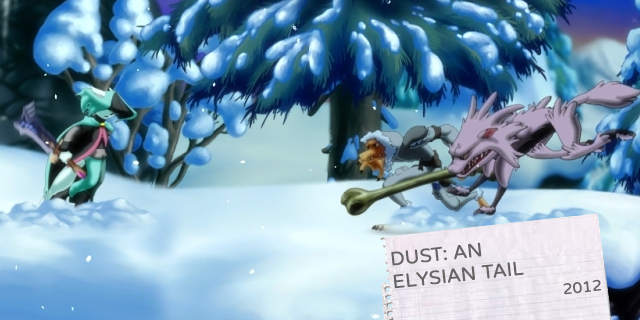
Echoes of the past
 Dust: An Elysian Tail stands on the shoulders of the giants that came before, and uses their lessons to create a game that is endemic to the virtues of what makes a good Metroidvania. Combining a hack-and-slash combat system, helpful level design, a rewarding upgrade system, a fresh indie background and jaw-dropping 2D visuals, Dust earns its place in the subgenre’s elite. It may not have broken a great deal of new ground, but it does everything so masterfully, and wears the progress of Metroidvanias with pride.
Dust: An Elysian Tail stands on the shoulders of the giants that came before, and uses their lessons to create a game that is endemic to the virtues of what makes a good Metroidvania. Combining a hack-and-slash combat system, helpful level design, a rewarding upgrade system, a fresh indie background and jaw-dropping 2D visuals, Dust earns its place in the subgenre’s elite. It may not have broken a great deal of new ground, but it does everything so masterfully, and wears the progress of Metroidvanias with pride.
 It’s also an example of where the subgenre can go in the future, without plunking down the cash for Shadow Complex-style visual effects or going full-retro like Cave Story. Where do you think the future of Metroidvanias will head? Is there a place for a big-budget title in the modern environment, or is “relatively-successful indie or downloadable project” the ceiling going forward?
It’s also an example of where the subgenre can go in the future, without plunking down the cash for Shadow Complex-style visual effects or going full-retro like Cave Story. Where do you think the future of Metroidvanias will head? Is there a place for a big-budget title in the modern environment, or is “relatively-successful indie or downloadable project” the ceiling going forward?
 I believe the big AAA Metroidvania is still ahead of us, and when it does get here, games like Shadow Complex will be one of the primary inspirations on how it brought the Metroidvania to the mainstream. While the bulk of the subgenre’s output will always be from indie auteurs, there is still a great deal of room to grow.
I believe the big AAA Metroidvania is still ahead of us, and when it does get here, games like Shadow Complex will be one of the primary inspirations on how it brought the Metroidvania to the mainstream. While the bulk of the subgenre’s output will always be from indie auteurs, there is still a great deal of room to grow.



















